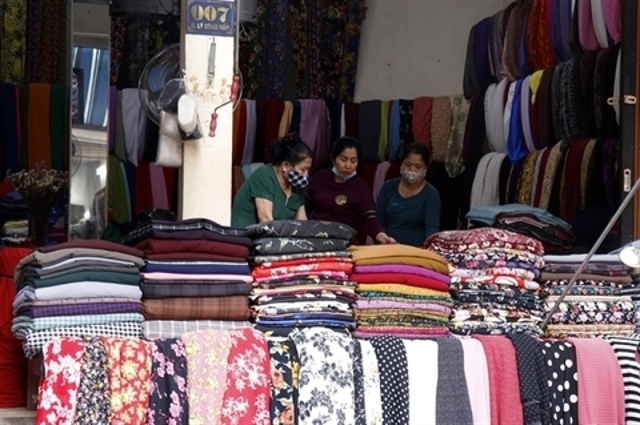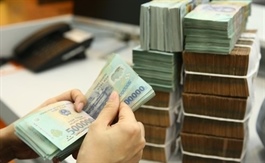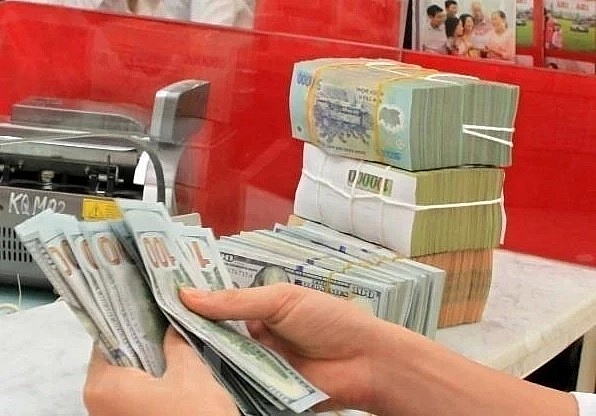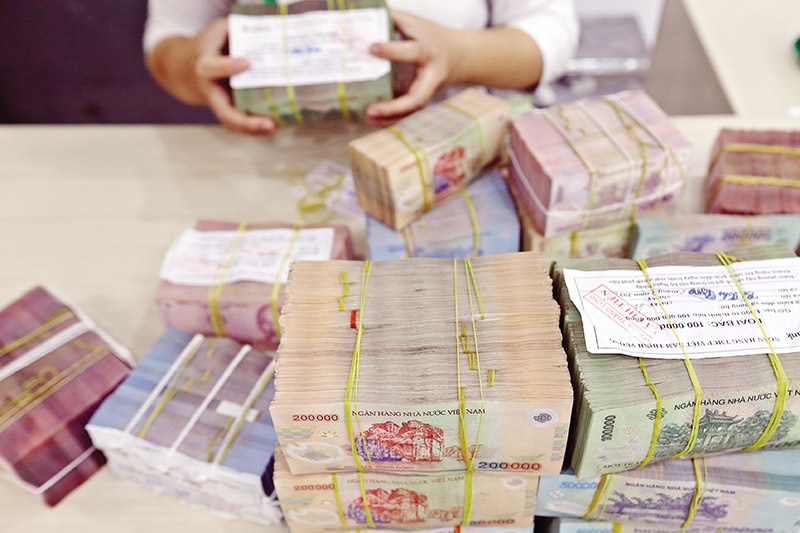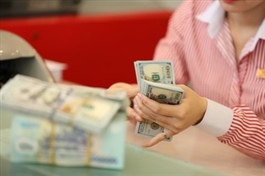Vietnam’s capital markets thrive in past decade: World Bank
Vietnam’s capital markets thrive in past decade: World Bank
Supported by strong macroeconomic conditions, Vietnam’s capital markets have seen significant growth over the past decade, according to the World Bank’s recent report 'Taking Stock August 2024: Reaching New Heights in Capital Markets.'
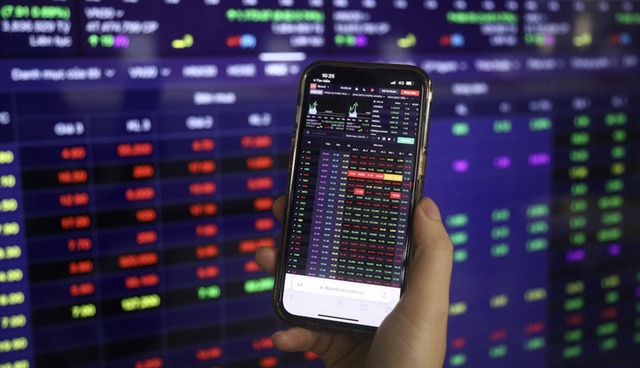
Vietnam’s capital markets have developed strongly over the past decade, according to the World Bank. Photo: Binh Khanh / Tuoi Tre |
With healthy economic expansion, a stable exchange rate, low inflation, and political stability, the country’s capital markets have advanced to match regional peers in size, reaching over 90 percent of gross domestic product (GDP) in 2023, comparable to Indonesia, the report said.
Well-functioning capital markets are critical to mobilize resources, as part of inclusive, resilient, and modern financial markets.
When evaluated through its success in intermediating finance, Vietnam’s capital market indicators show an opportunity for further growth.
It is critical to look at three functions of financial intermediation that capital markets have, namely funding, savings, and pricing functions.
Despite a high equity market capitalization, the amount of funds raised through stock exchanges in Vietnam over the past five years has been relatively modest.
Fundraising through the bond markets, particularly corporate bonds, has been relatively significant, but long-term financing remains constrained, and recent developments have exposed weaknesses in market foundations.
In terms of savings, the total amount mobilized through institutional investors is still low, at just 19 percent of GDP, which is below most regional peers and limits the funds available for long-term investments.
Regarding pricing, capital markets have struggled to provide strong price references due to unclear short-term interest benchmarks, inefficiencies in the government bond market, and high stock price volatility.
The World Bank's report highlights these specific challenges faced by Vietnam and offers recommendations to help unlock the potential of its capital markets.
“A fundamental issue in Vietnam is the underdevelopment of the institutional investor base, including the underutilization of the Vietnam Social Security fund (VSS), a potentially dominant force in driving capital market development,” the report reads.
The lack of substantial institutional investor presence in the corporate securities markets has led to dominance by individual investors, which can result in volatility due to herd behavior.
This dynamic contributes to increased risks in the corporate bond market and hampers the equity market’s ability to effectively support corporate sector financing.
The almost exclusive placement of the VSS portfolio in government bonds limits investment returns, creates price inefficiencies, and adversely impacts financial sector development.
Managing a portfolio equivalent to 10 percent of GDP, VSS is the single largest institutional investor in Vietnam, larger than all other domestic institutional investors combined.
However, due to a legal constraint, VSS assets are heavily concentrated in government bonds. VSS has become a captive investor for government bonds, causing artificially low yields in auctions, and thus distorting the price function of the government bond market.
VSS investment diversification would accelerate the modernization of Vietnam’s financial system in several ways. It would remove it from a captive status in the government bond market, reduce market distortions, and improve the pricing signals.
Further, the report suggests that diversifying into corporate securities markets, both stocks and bonds, would benefit market development through increased investor diversity and contribute to market stability as a long-term investor.
If executed on a small and gradual scale, such diversification could enhance returns on VSS investments over the long term.
Other institutional investors should add their weight to drive corporate sector development.
Life insurers are relatively sizable, but they are also concentrated in government bonds and bank deposits. This means corporate securities markets are dominated by non-professional investors prone to herd behavior and vulnerable to mis-selling and abuse, while higher quality issuers across all economic sectors are not encouraged to come to market, for long-term funding opportunity is limited.
A concerted effort to develop the capital markets should be a key objective of the government and all stakeholders.
Healthy growth in capital markets would also generate positive externalities for the overall economy by promoting efficient capital allocation.
Vietnam stands to achieve higher economic growth not only by utilizing domestic resources more effectively but also by leveraging capital from international markets.
This enhanced capital flow will support the country in reaching its ambitious high-income goals.
Vietnam’s growth accelerated in H1
Vietnam's GDP grew 6.4 percent year on year in the first half of 2024 after a moderate five-percent growth rate in 2023, boosted by a rebound in manufacturing exports as well as higher consumption and investment.
Merchandise trade was more robust than expected between January and June, fueled by stronger external demand, with exports and imports growing at 16.9 and 17 percent year on year, respectively.
While the net export contribution to GDP remained modest, expanding trade was accompanied by a gradual recovery of domestic demand with investment and consumption growth recording 6.7 and 5.8 percent against the same period last year, respectively.
On the production side, manufacturing, export-oriented services, and tourism posted a robust expansion in the first half of the year.
Specifically, manufacturing output increased seven percent year on year, contributing a quarter of GDP growth. Meanwhile, the service sector, which accounts for more than half of GDP growth, rose 7.4 percent year on year.
Export-oriented services (transport and warehousing) benefited from a resurgence in goods exports, as well as the recovery of the hospitality sector, with the number of foreign tourists reaching 8.8 million in June 2024, above pre-COVID levels.
The agriculture sector’s contribution remained stable, at 0.4 percentage points.
Despite recovering, consumer spending remained below pre-pandemic rates. Retail sales grew 8.8 percent in the first half of 2024, driven by goods sales on a stable trajectory since late 2022, but below a pre-pandemic average of 11.6 percent.
Demand for durable and non-essential goods and services, such as vehicles, consumer appliances, holidays, and home renovations, remained weak.
Private investment growth accelerated but still lagged behind pre-COVID levels. Recovering manufacturing exports helped boost investments, with total investment growing 6.8 percent, up from 4.8 percent in the first half of 2023, though still below the pre-COVID average of 7.1 percent.
Domestic private investment contributed 3.9 percentage points to this growth, while foreign investments saw the largest increase, rising 13 percent year on year during the six-month period.
In contrast, public sector investment growth slowed to four percent, down from 20.5 percent in the first half of 2023.
Vietnam’s economic prospects are positive, with broadly balanced risks
Vietnam’s economy is forecast to grow 6.1 percent in 2024, rising to 6.5 percent in the 2025-26 period.
This projection anticipates a slowdown in manufacturing export growth in the second half of 2024, following a 16.9-percent rebound in the first half of the year.
The expected moderation of global demand in 2024, particularly from the U.S., Vietnam’s largest export market, factors into this outlook.
The real estate market is showing signs of recovery and is expected to improve further in late 2024 and into 2025, driven by the easing of the corporate bond market freeze and the implementation of the new Land Law from Augus this year.
With continued export growth and a real estate recovery, domestic demand is expected to strengthen in the second half of 2024 as investor and consumer sentiment improves.
The current account balance is projected to maintain a small surplus, while the government resumes fiscal consolidation. Inflation is expected to slow to 3.5 percent by 2026 from 4.5 percent in 2024.
However, there are downside risks, including slower-than-expected global growth, particularly from major trading partners like the U.S., the European Union, and China.
Such developments could impact Vietnam’s manufacturing exports and overall growth.
Domestically, a deterioration in macroeconomic stability could erode consumer confidence, affecting consumption and investment.
The real estate market recovery might take longer than anticipated, potentially impacting private sector investment.
If the financial sector's asset quality worsens, bank lending capacity could be undermined.
Vietnam’s vulnerability to climate change also poses risks, as increasingly severe climate-related natural disasters could have adverse effects.
Conversely, potential upside developments include stronger-than-expected global growth, which could drive a sustained recovery in Vietnam’s export sector.
More accommodative monetary policies by major advanced economies, including recent actions by the European Central Bank and the Bank of England, along with a possible rate cut by the U.S. Federal Reserve, could support demand in advanced economies and boost Vietnamese exports.
This could also reduce global financing costs and narrow the interest rate gap between the Vietnamese dong and the U.S. dollar, potentially benefiting Vietnam’s banking and financial sectors.




